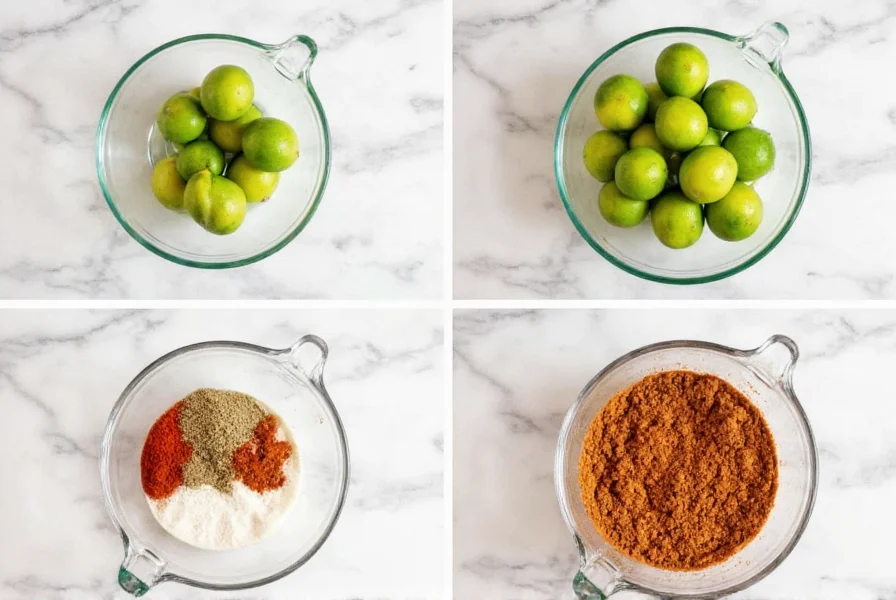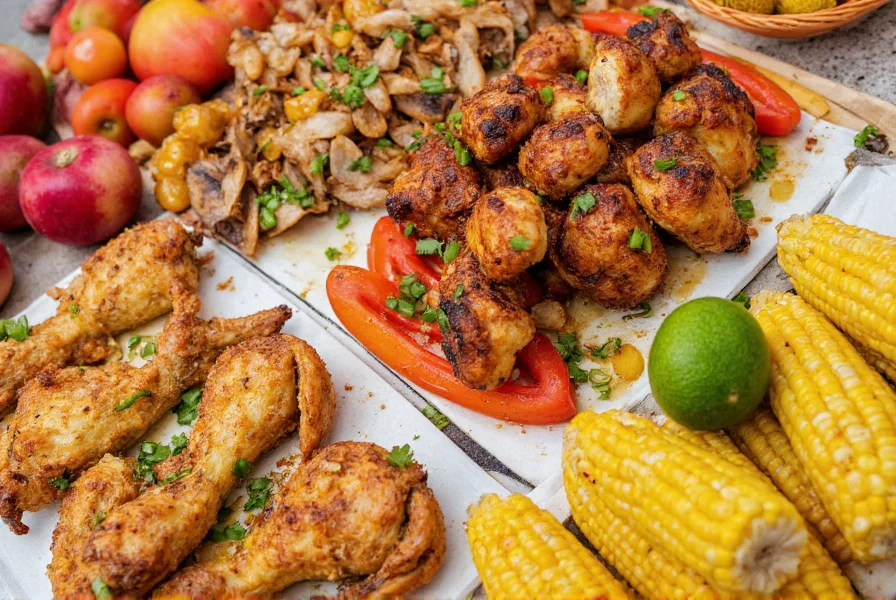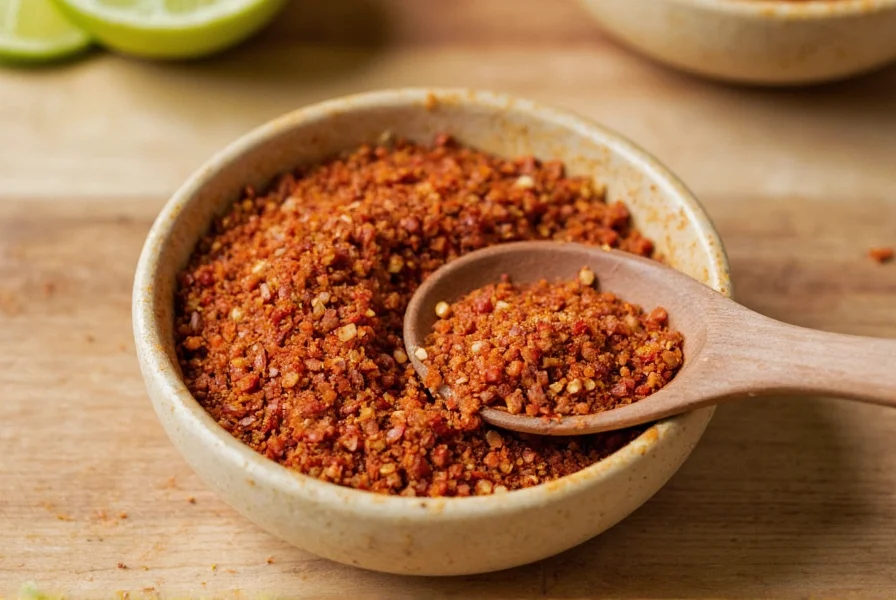Chili lime seasoning has become a pantry staple for home cooks seeking to add authentic Latin American flair to their dishes. This dynamic blend works magic on everything from street corn to fresh mango slices, creating that irresistible sweet-heat-tang combination popularized by Mexican street food vendors. Understanding the components and proper application transforms ordinary meals into extraordinary culinary experiences.
The Essential Components of Authentic Chili Lime Seasoning
While commercial blends vary, authentic chili lime seasoning maintains a consistent foundation of key ingredients that create its signature flavor profile. The triumvirate of chili, lime, and salt forms the backbone, with supporting players enhancing complexity.
The chili component typically comes from ancho, guajillo, or cayenne peppers, providing varying heat levels and earthy notes. High-quality lime zest—never artificial lime flavor—contributes the essential citrus brightness. Sea salt or kosher salt serves as both flavor enhancer and preservative. Many traditional recipes include garlic powder, cumin, and oregano for depth, while some regional variations incorporate toasted sesame seeds or dehydrated tamarind for additional complexity.
| Core Ingredient | Function | Recommended Proportion |
|---|---|---|
| Chili powder (ancho/guajillo) | Heat and earthy base flavor | 50% |
| Fresh lime zest | Citrus brightness and aroma | 25% |
| Sea salt | Flavor enhancement and preservation | 20% |
| Supporting spices (cumin, garlic) | Complexity and depth | 5% |
Creating Perfect Homemade Chili Lime Seasoning
Commercial chili lime seasonings often contain anti-caking agents and preservatives that compromise freshness. The superior flavor of homemade versions comes from using freshly zested lime and high-quality chili powders. The process takes just minutes but yields dramatically better results than store-bought alternatives.
For the best homemade chili lime seasoning recipe from scratch, start with 2 tablespoons of premium ancho chili powder, 1 tablespoon of finely grated lime zest (avoiding the bitter white pith), 1½ tablespoons of sea salt, 1 teaspoon of garlic powder, and ½ teaspoon each of ground cumin and Mexican oregano. Combine these in a small bowl, breaking up any clumps with a fork. Spread the mixture on a baking sheet and let it air-dry for 24 hours to ensure complete moisture removal—this prevents clumping during storage.

Optimal Applications for Chili Lime Flavor
Understanding what to use chili lime seasoning on separates casual users from true enthusiasts. While popular on street corn (elote), its applications extend far beyond. The acid from lime zest cuts through rich fats, making it ideal for grilled meats, particularly chicken thighs and skirt steak. Sprinkled on fresh watermelon or mango, it creates that beloved sweet-heat combination.
For best uses for chili lime seasoning in Mexican cooking, consider these professional applications:
- As a dry rub for fish tacos (apply 30 minutes before cooking)
- Mixed with mayonnaise for a signature taco sauce
- Shaken with olive oil for a vibrant salad dressing
- Sprinkled on roasted sweet potato wedges
- Enhancing plain popcorn for a savory snack
When using on fresh fruit, apply just before serving to prevent the salt from drawing out excessive moisture. For cooked applications, add during the final minutes of cooking to preserve the volatile lime oils.
Storage Techniques for Maximum Freshness
Proper storage determines how long your chili lime seasoning shelf life will last. Exposure to light, heat, and moisture rapidly degrades both the chili compounds and volatile lime oils. Store in an airtight container away from direct sunlight for optimal preservation.
For extended freshness, divide your homemade blend into small portions and freeze what you won't use within one month. The freezer preserves volatile compounds better than room temperature storage. Never store near the stove or oven where temperature fluctuations occur. Properly stored, homemade chili lime seasoning maintains peak flavor for 3-4 months, while commercial versions typically last 6-8 months.
Authentic Regional Variations
The authentic Mexican chili lime seasoning varies significantly by region. Northern Mexico often incorporates smoked chilies like chipotle for depth, while coastal regions emphasize the citrus component with additional orange or tangerine zest. Some Oaxacan versions include ground toasted pumpkin seeds (pepitas) for texture.
In contrast to Americanized versions that sometimes use citric acid instead of real lime, traditional preparations rely solely on sun-dried lime zest. The Mexican street food staple Tajín—often mistaken for generic chili lime seasoning—actually contains a specific ratio of chilies, lime, and salt with no additional spices, making it distinct from more complex homemade blends.
Smart Substitutions When You're Out
Understanding chili lime seasoning substitute options prevents recipe disasters. If you lack this specialty blend, combine equal parts chili powder and lime zest with half as much salt. For dishes where texture matters (like fresh fruit), add a pinch of sugar to mimic commercial blends.
The difference between chili powder and chili lime seasoning is significant—chili powder lacks the citrus component entirely. To approximate chili lime seasoning from basic pantry staples, mix 2 teaspoons chili powder with 1 teaspoon lime zest and ¼ teaspoon salt. For liquid applications like marinades, add ½ teaspoon fresh lime juice per teaspoon of seasoning substituted.

Health Considerations and Nutritional Profile
While primarily a flavor enhancer, chili lime seasoning offers some health benefits of chili lime seasoning. Capsaicin in chili peppers may temporarily boost metabolism and provide anti-inflammatory benefits. Lime zest contributes small amounts of vitamin C and flavonoids. Being salt-based, moderation is key for those monitoring sodium intake.
A quarter-teaspoon serving typically contains just 5-10 calories, no fat, and 100-150mg of sodium. The absence of sugar and artificial ingredients makes quality homemade versions a healthier choice than many commercial seasoning blends that include fillers and preservatives.
Frequently Asked Questions
What's the difference between Tajín and regular chili lime seasoning?
Tajín is a specific commercial brand of chili lime seasoning with a protected recipe containing chilies, lime, and salt without additional spices. Regular chili lime seasoning often includes garlic powder, cumin, and oregano, creating a more complex flavor profile than the simpler Tajín formula.
Can I use lime juice instead of lime zest in chili lime seasoning?
Lime juice doesn't work as a direct substitute for lime zest in dry seasoning blends because the liquid content causes clumping and spoilage. Always use finely grated lime zest (the colored part of the peel) for dry blends. For liquid applications like marinades, you can supplement with fresh lime juice.
Why does my homemade chili lime seasoning clump together?
Clumping occurs when moisture remains in the blend, usually from insufficiently dried lime zest. Ensure lime zest is completely air-dried for 24 hours before mixing with other ingredients. Store in an airtight container with a silica packet to absorb ambient moisture, and consider freezing portions you won't use within a month.
What's the best chili pepper to use for authentic flavor?
Ancho chili peppers provide the ideal balance of mild heat and fruity complexity for most applications. For more heat, substitute 25% of the ancho with guajillo or cayenne. Traditional Mexican street seasoning often uses a blend of multiple regional chilies rather than a single variety for layered flavor.











 浙公网安备
33010002000092号
浙公网安备
33010002000092号 浙B2-20120091-4
浙B2-20120091-4